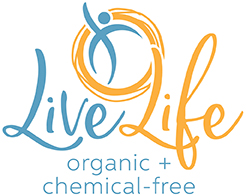I’ll cut right to the chase.
There are over 100,000 chemicals used to make food, clothing, building materials, household products, cosmetics, cleaners, and personal care products – all items that you and I use every day.
The items I’m referring to are found in the typical home.
In quality products.
In expensive products.
In cheap products.
In locally produced products.
In the products that you’re buying.
Below are a few of the ways our body functions can be affected by chemicals.

More than 20 health organizations have found that over 140 medical conditions may be linked to chemicals found in, on and around the products we use every day.
Types of Health Organizations
Health organizations, doctors, non-profits, and scientific agencies have published documents, spoken up, and helped to educate people about the solid links and possible connections between these chemicals and health. Here are a few examples of the organizations I’m referring to:
- Chemical Injury.net
- Agency for Toxic Substance and Disease Registry (ATSDR), Division of Health Assessment and Consultation
- National Institute of Health, National Cancer Institute
- National Institute of Health, Eunice Kennedy Shriver National Institute of Child Health and Human Development
- Environmental Working Group (EWG)
- BreastCancer.org
- U.S. Environmental Protection Agency
- Breast Cancer Fund
- The University of Calgary
- University at Buffalo, The State University of New York
- Environmental Health Center – Dallas
- Autism Speaks
So, what info did these types of organizations find?
Findings – Bottom Line.
The bottom line is this: chemicals in our everyday products are damaging our bodies at a cellular level—this means the very cells that make up our skin, bones, muscles, organs, and brain.
It’s causing:
1. Sensitization, which is a HYPERsensitivity to one or many things. In my personal experience, my allergists (plural) diagnosed me with “bad allergies,” when in fact it was not an allergy at all but a sensitivity that had developed due to chemical damage.
2. Damage to cells, over and over…and over. Damaged cells are inflamed and create free radicals that damage other cells. Well, then those damaged cells become inflamed and create free radicals that damage other cells. This keeps on going, creating a snowball effect or cycle of repeated damage.
Then, a second snowball effect occurs when the body can’t detox correctly due to damaged cells…which creates more free radicals and more problems with detoxing.[1]
3. Major organ cells are damaged. The cells that are being damaged include those that make up our major organs. We end up with limited function of our brain cells, nerve cells, and heart cells. Which leads to item #4 below.
4. Impairment of all body functions. This can include (but is not limited to) the following functions:[2]
In addition, damaged cells can affect circulation,[3] the liver, kidneys, lungs/respiratory tract, and the endocrine and immune systems. It can accelerate degenerative diseases, increase osteoporosis of bones, and speed up the aging process.[4]
So… basically everything.
What to do.
As Dr. Grace Ziem explained in documents found on Chemical Injury.net, “For everyone, minimizing this vicious cycle is vital to health.” She goes on to say that all inflammatory and degenerative disease and cancer risk can be greatly reduced.
You can get rid of chemicals in your home and life by choosing organic, chemical-free food, clothing, household products, building materials, cleaners, and personal care products. Making this lifestyle change to be organic and chemical-free can be overwhelming at first, but is very doable if you take simple steps, one.step.at.a.time. These small steps over time can make a big impact!
Choose one area to start with and build on your successes.
Create an organic chemical-free lifestyle by:

Eating food that is chemical-free.
Organically grown and made, unpackaged or packaged in glass, with short transportation times and sold in health conscious stores or markets.

Wearing clothes that are chemical-free.
Organic natural fiber clothing with natural dyes and free of finishes (or very little finishes).

Buying household items that are chemical-free.
Non-plastic items, made of solid hardwood, ceramic or glass, with non-VOC and least chemical paints, stains and finishes that are lead free, adhered with nails, screws or non-VOC and least-chemical glues.

Using personal care products that are chemical-free.
Organic natural ingredients, packaged in glass or ceramic and free of synthetic (man-made) chemicals found to be harmful to health.

Installing chemical-free building materials.
Solid hardwood, ceramic, marble, glass or natural materials whenever possible, finished with non-VOC and least-chemical paints, stains, finishes that are lead free, installed with screws, nails and/or non-VOC and least-chemical adhesives and caulks. Installation methods minimize dust left behind by construction (often filled with chemicals too), off-gassing, mold (which can require chemicals to mitigate), machining oils, and left over products to be stored.

Organic, natural, chemical-free cleaners.
Tried and true simple cleaning products made of organic and natural ingredients and free of synthetic chemicals.
Conclusion
Items that you and I use, eat, and buy every day are made of chemicals found on a list of over 100,000 chemicals used to create products. Many of these chemicals have been found to cause damage to cells. The damaged cells end up creating more damaged cells, creating a snowball effect.
As you can imagine, this has a significant effect on the body’s day-to-day functionality and overall health. By choosing food, clothes, household items, personal care products, building materials, and cleaners that are organic, natural and as chemical-free as possible, your daily exposure to these chemicals may be greatly reduced.
Resources
[1][2] “How Chemical Injury/Chemical Sensitivity Affects the Body,” Chemical Injury.net, Accessed February 7, 2017
[3][4] “How Chemical Injury/Chemical Sensitivity Affects the Body,” (pg 2) Chemical Injury.net, Accessed February 7, 2017

